Professional development/Design thinking/Detailed designs: Difference between revisions
No edit summary |
No edit summary |
||
| Line 4: | Line 4: | ||
==Mechanical== | ==Mechanical== | ||
For a mechanical project a concept drawing might be a rough hand sketch to get general ideas across but it typically does not have much detail. A detailed design should include: | For a mechanical project a concept drawing might be a rough hand sketch to get general ideas across of what the system could look like and what functions it needs to perform but it typically does not have much detail. A detailed design should include: | ||
#All individual parts in the design with thought into how exactly they will be manufactured (laser cut, 3D print, machined, etc) in which material (plastic, wood, metal) or what items will be bought. | #All individual parts in the design with thought into how exactly they will be manufactured (laser cut, 3D print, machined, etc) in which material (plastic, wood, metal) or what items will be bought. | ||
| Line 31: | Line 31: | ||
==Electrical== | ==Electrical== | ||
Similar to mechanical, an electrical project a concept drawing might be a rough hand sketch to get general ideas across but it typically does not have much detail. A detailed design should include: | Similar to mechanical, an electrical project a concept drawing might be a rough hand sketch to get general ideas across of what components will be used or what the behavior of the system should be but it typically does not have much detail. A detailed design should include: | ||
#All individual parts in the design with thought into how exactly they will interact together (what voltage is needed to power each part, what voltage does the data run on, what life does a battery need to have, etc). | #All individual parts in the design with thought into how exactly they will interact together (what voltage is needed to power each part, what voltage does the data run on, what life does a battery need to have, etc). | ||
Revision as of 19:24, 22 December 2021
A detailed design is something that should be created in between a concept drawing and the start of prototyping. The purpose is to have a concrete plan of what the prototype will look like and what components might be needed. This is not to say that it cannot change as progress continues in the project, it should be updated as you learn from testing various prototypes. The goal is also to start quantifying different parts of the project and thinking about how each part will be built or where it will come from. A good design does not need to be made from scratch, you do not want to reinvent the wheel so use existing pieces where they exist.
A detailed design will not look the same depending on the type of project you are working on, below are some examples.
Mechanical
For a mechanical project a concept drawing might be a rough hand sketch to get general ideas across of what the system could look like and what functions it needs to perform but it typically does not have much detail. A detailed design should include:
- All individual parts in the design with thought into how exactly they will be manufactured (laser cut, 3D print, machined, etc) in which material (plastic, wood, metal) or what items will be bought.
- Assembly of all parts and thought into how exactly they will be put together (permanent, temporary, etc) and how (fasteners, adhesives, etc).
- General dimensions are also important to be able to think about how much material needs to be bought and if items are readily available in that size.
A detailed design can also be a hand sketch, like the concept drawing, but it can also be done using a CAD design software, like Onshape.
| Project | Concept drawing | Detailed design | ||
|---|---|---|---|---|
| Camera attachment[1] | 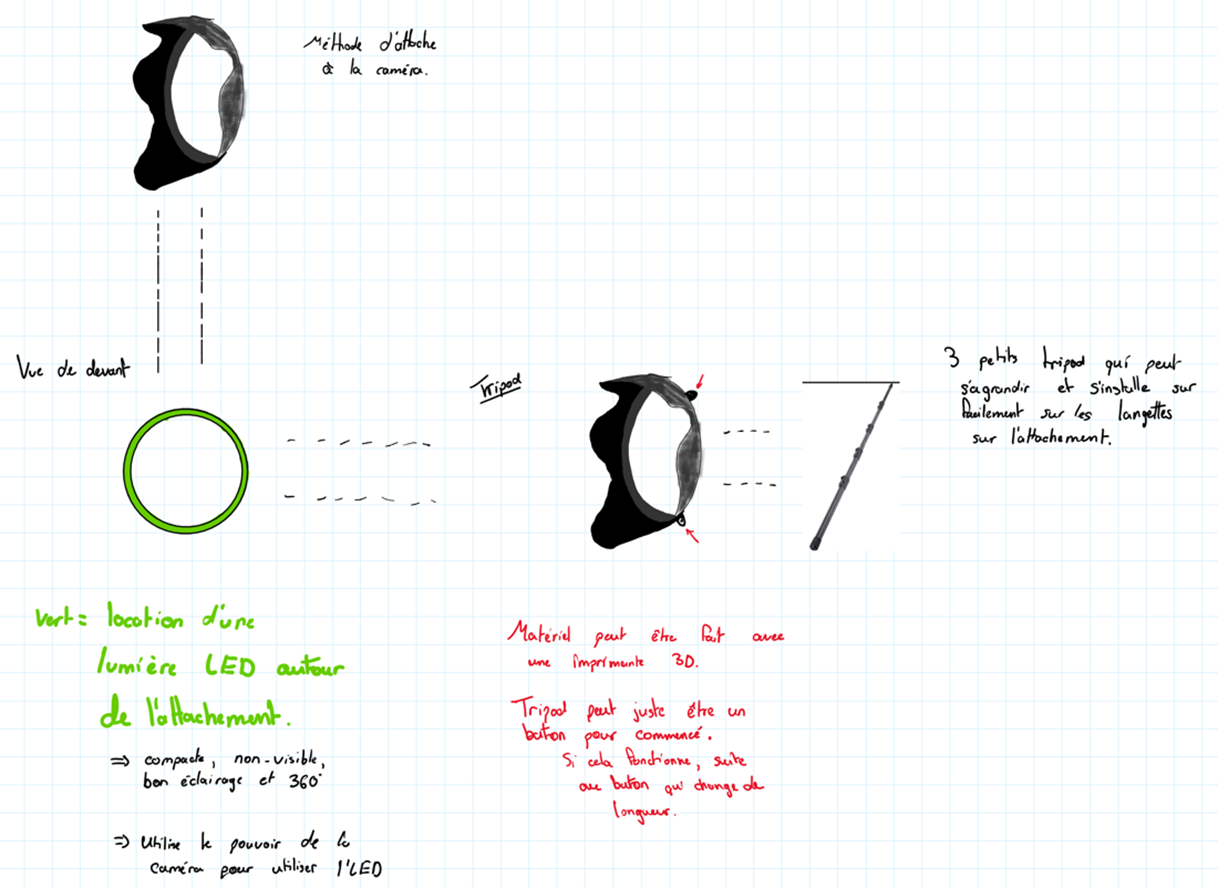 |
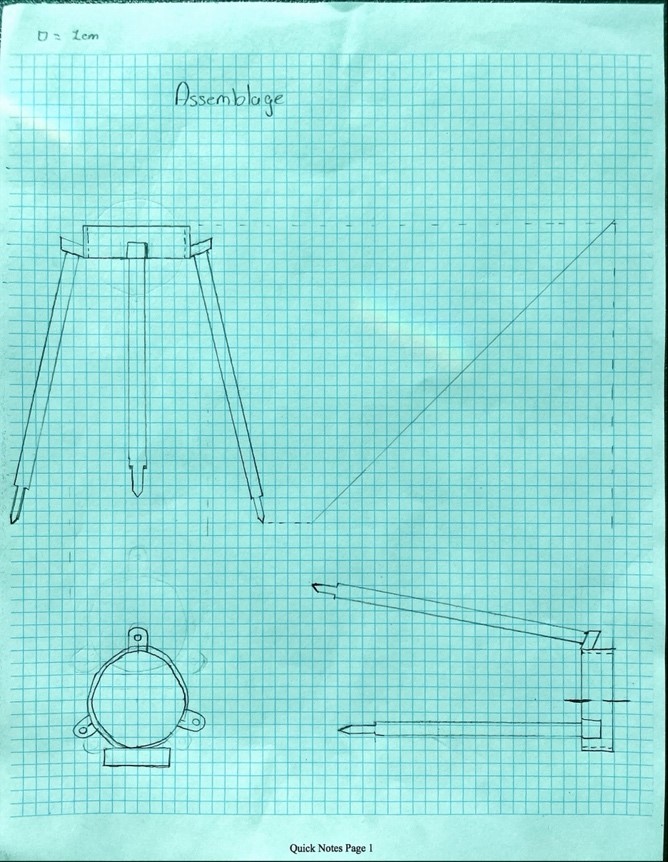 |
 |
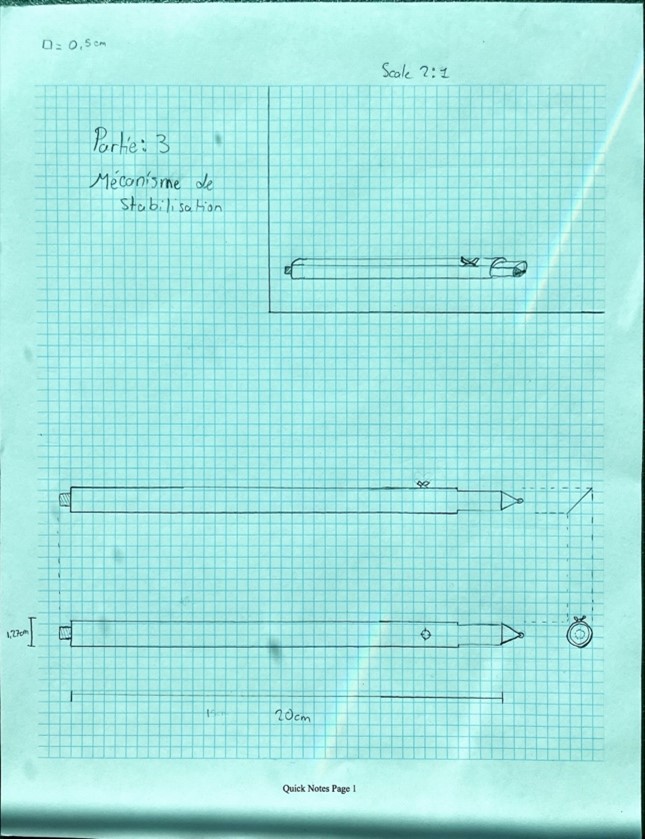 |
| Camera attachment[2] | 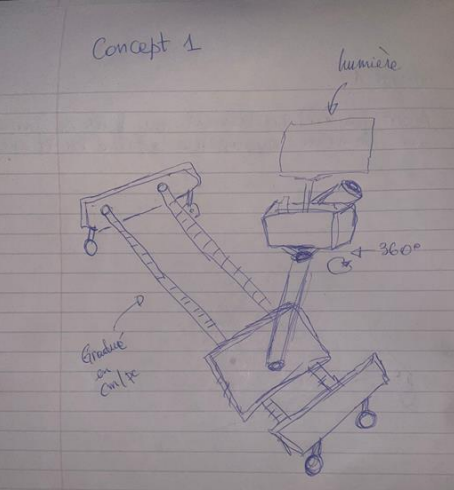 |
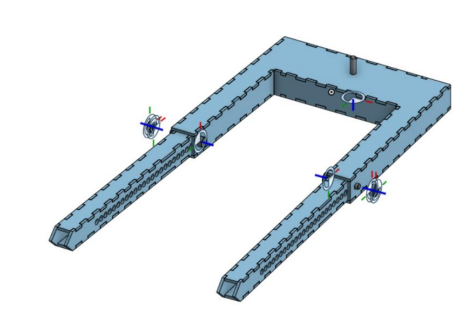 |
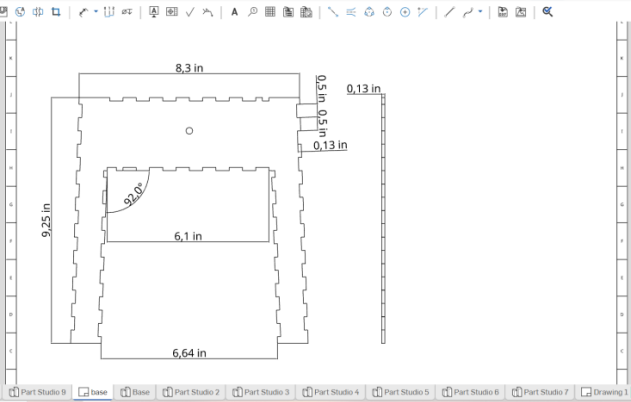 |
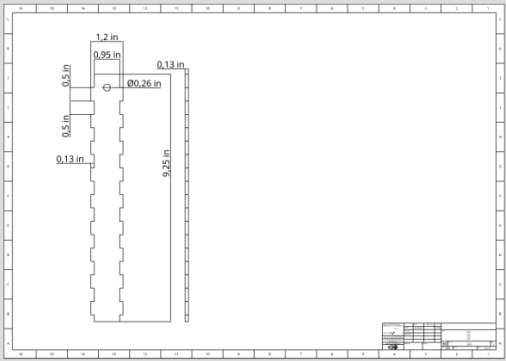 |
Electrical
Similar to mechanical, an electrical project a concept drawing might be a rough hand sketch to get general ideas across of what components will be used or what the behavior of the system should be but it typically does not have much detail. A detailed design should include:
- All individual parts in the design with thought into how exactly they will interact together (what voltage is needed to power each part, what voltage does the data run on, what life does a battery need to have, etc).
- Assembly of all parts and thought into how exactly they will be put together (use of protoboard, use of headers, etc) and how (directly soldered together, use of connectors, etc).
- General dimensions are also important to be able to think about how much space is needed for the items and how much wire would be needed for example.
A detailed design can also be a hand sketch, like the concept drawing, but it can also be done using a design software, like tinkercad circuits.
| Project | Concept drawing | Detailed design | ||
|---|---|---|---|---|
| Car monitoring system[3] | 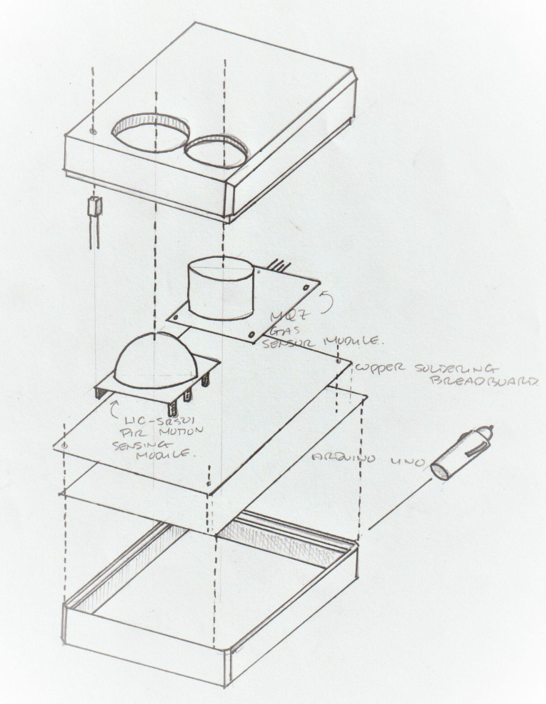 |
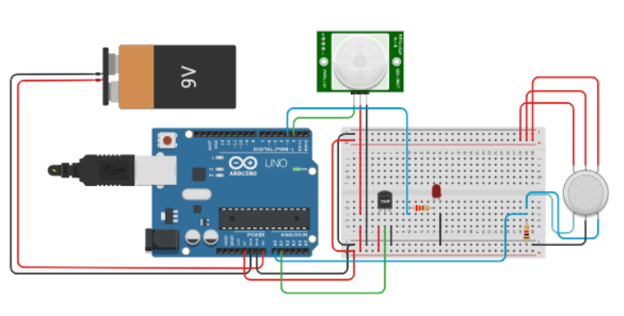 |
||
Software
wireframe or storyboard of UI elements, flowchart for backend functionality, including links between different functions and features